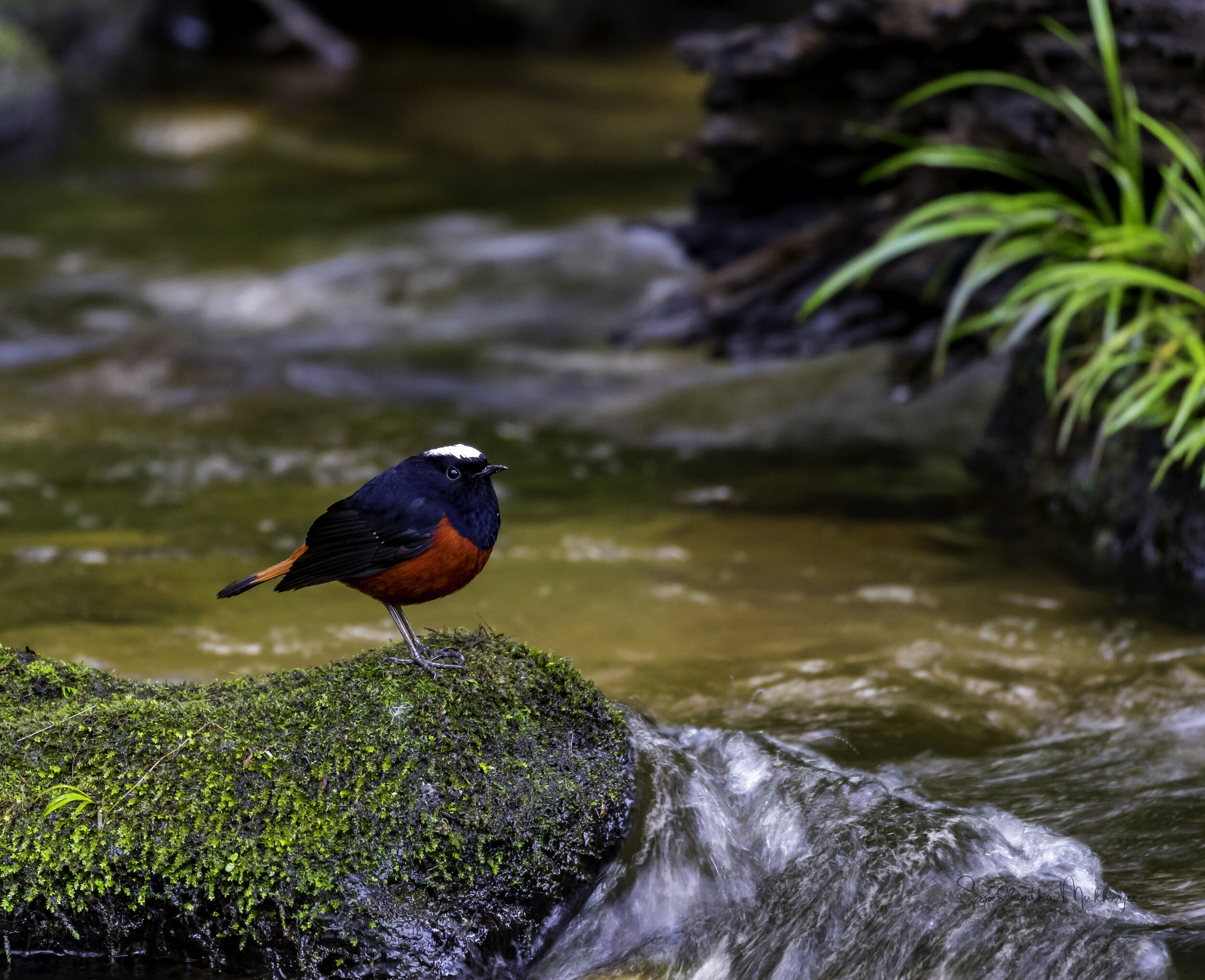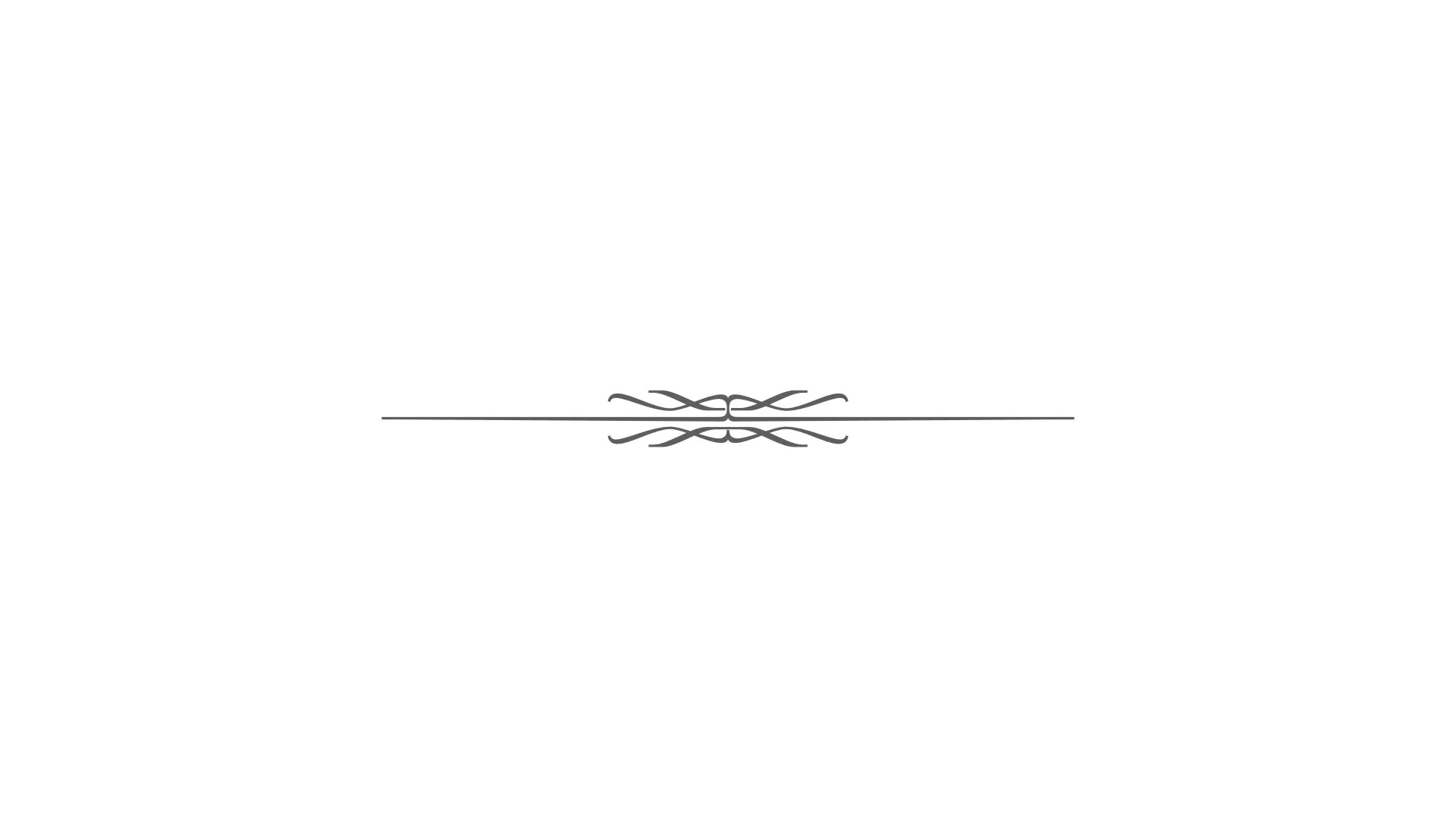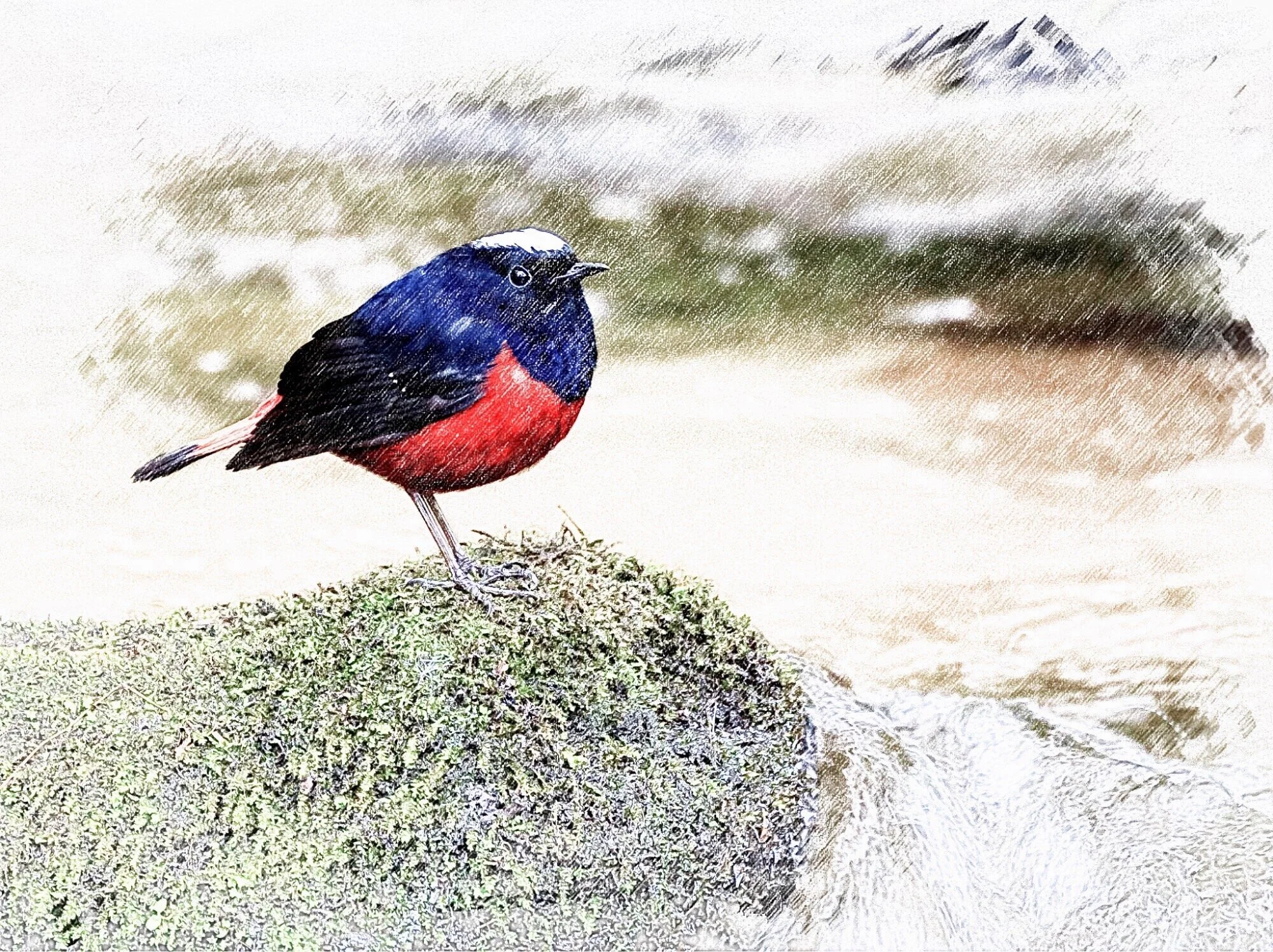Redstart - What’s in a name?
\red-ˌstärt\ a small Old World songbird
It’s easy to assume, with bird names, that we know what they mean, and often that assumption is quite correct. Woodpeckers peck wood, bee-eaters feed on bees, and whitethroats are indeed white around the neck. Other names seem almost wilfully obscure: what on Earth does the name puffin mean? Or hobby? Why are turtle doves named after reptiles? And don’t get me started on some of the more bizarre bird names found around the world – from zitting cisticola, leaflove to hardhead, and bananaquit to bearded mountaineer.
Yet, as I discovered when I was researching the origins of bird names, if you dig deep enough, you unearth all sorts of fascinating stories about what the names mean, where they came from and, especially, the men and women who created them. The origin of some names may, at first, seem obvious, yet are not quite as straightforward as they appear. Take the simplest of all bird names: blackbird. It’s a bird, and it’s black. Isn’t that all we need to know? But what about the crow, rook, raven? They’re black too so why was the Blackbird singled out as a ‘black‘ bird?
The reason for this apparent anomaly is that, until the late medieval period, birds were not called “birds” at all, but fowls – as in Chaucer’s poem The Parliament of Fowls. The word bird (originally the Anglo-Saxon brid), referred only to young fowls, or chicks. Then, sometime around the time Chaucer was writing, this meaning began to shift. From then on, although “fowl” was still used for larger birds such as members of the crow family, “bird” became the norm for all smaller birds, including the blackbird. So, at the time it was named, this really was the only truly “black bird”.
Many of our oldest bird names – including raven, rook and crow – are onomatopoeic: they imitate the sound made by the bird itself. Cuckoo, chiffchaff and kittiwake are other well-known examples. Far less obvious ones include nightjar (from the “churring” sound made by this nocturnal bird), bittern (from its deep, booming call), and the aforementioned turtle dove. “Turtle” is a corruption of the bird’s soft “tur-tur” call, so has nothing to do with the aquatic reptile.
Other ancient bird names relate to a bird’s appearance: its size, colour, shape or distinctive markings. Again, some are obvious: such as great spotted woodpecker, long-tailed tit and the Dollarbird. But with others it takes some linguistic detective work to uncover their true meaning. Take the familiar redstart and wheatear. Both names superficially make sense, yet as soon as you look more closely, they become problematic. After all, redstarts are not noticeably jumpy, and I’ve certainly never seen a wheatear in a field of wheat.
The reason these names appear puzzling is down to the Norman Conquest of Britain. Perhaps the greatest change that resulted from this invasion was in everyday language: within a century or so, Anglo-Saxon had merged with Norman French to create a new, hybrid tongue known as Middle English – the precursor to the way we speak today. But as the old language fell into disuse, some of its words no longer made any sense. So, by a process called false etymology, people made up new versions, which sounded plausible, even if their original meaning had been lost. Thus, the Anglo-Saxon “red steort” (meaning red tail) turned into redstart; and “wheteres” – literally white arse, changed into wheatear. Norman French also had a major influence on the names of ducks (mallard and wigeon), game birds (pheasant and partridge), and raptors (peregrine and hobby).
What these all have in common is that they were important to the Norman nobility – either as food, or for hunting and sport – so their French names took precedence over the older, English ones. From the 18th century onwards, existing names were codified by professional ornithologists who also coined new ones, such as black-tailed godwit or white-fronted goose. A trend also arose for naming birds after people: sometimes those who had discovered the species, such as George Montagu (Montagu’s harrier).
I have here some redstarts photographed at different locations over the last few years.
‡‡‡‡‡
White-capped Redstart
The white-capped redstart or white-capped water redstart (Phoenicurus leucocephalus) is a passerine bird of the Old World flycatcher family Muscicapidae. Both genders are black with red underparts and white crown atop their heads. Males have larger white pattern on top of the head and brown red spots under the wings. It is found in the Indian Subcontinent and Southeast Asia, as well as some adjoining areas. The species ranges across Afghanistan, Bangladesh, Bhutan, Cambodia, India, Laos, Myanmar, Nepal, Pakistan, Tajikistan, Thailand, Tibet and Vietnam. Its natural habitat is temperate forests.
‡‡‡‡‡
White-bellied Redstart
The white-bellied redstart (Luscinia phaenicuroides) is a species of bird of the family Muscicapidae. It is found in Bhutan, China, India, Laos, Myanmar, Nepal, Pakistan, Thailand, and Vietnam, where its natural habitat is temperate forests. The white-bellied redstart was previously the only species in the genus Hodgsonius. A large molecular phylogenetic study published in 2010 found that the white-bellied redstart formed part of a clade that included the common nightingale. The species was therefore moved to Luscinia.
‡‡‡‡‡
Plumbeous Water Redstart (Male)
The plumbeous water redstart (Phoenicurus fuliginosus) is a passerine bird in the Old World flycatcher family Muscicapidae. It is found in South Asia, Southeast Asia and China. Males are slate blue in colour, while females are grey. The bird's common name refers to its colour which resembles lead. They tend to live near fast-moving streams and rivers.
The plumbeous water redstart is typically 14 centimetres (5.5 in) long in total, with an average weight of 22 grams (0.78 oz) for males and 18.8 grams (0.66 oz) for females. The male birds are slate blue in colour with a tail that is rusty red. On the other hand, female birds are pale grey and feature a white rump. The bird is found in Afghanistan, Bangladesh, Bhutan, China, India, Laos, Myanmar, Nepal, Pakistan, Taiwan, Thailand, and Vietnam. Their preferred habitats are streams, nullahs and rivers with boulders that are shaded, as well as vegetation near riverbanks. Streams with higher populations of insects such as mayflies appear to be preferred.
‡‡‡‡‡
Plumbeous Water Redstart (Female)
The Plumbeous Redstarts are typically found at relatively high elevations, with the ones living in the Himalayas seen between 2,000 metres (6,600 ft) and 4,100 metres (13,500 ft). However, they tend to descend to lower altitudes during the winter. The plumbeous water redstart has been placed on the Least Concern category of the IUCN Red List, as the population has remained stable throughout the last ten years. The size of its distribution range is over 5,100,000 square kilometres (2,000,000 sq mi). The plumbeous water redstart is very protective of its habitat and will be extremely confrontational to any trespasser on its territory. In order to catch flies in rivers, it flies vertically until it is at least 20 feet (6.1 m) above the water, before gliding down in a spiral back to the same place.
While we were waiting for this particular specimen, there was a Slaty-backed Forktail in the background flitting in and out. More about the Slaty-backed Forktail in a later blog.
Related Posts













